Best Herbs for Postpartum: Top Breastfeeding & Healing Herbs
I will discuss the best herbs for postpartum moms, including herbs for breastfeeding and healing. Postpartum care is an essential part of healing for every woman. Most women prepare very well for the labor and birth of their new baby but can overlook the postpartum period in their planning. This post is to help prepare new moms with natural remedies that will support breastfeeding while also healing from birth. When new mothers neglect their postpartum recovery time, issues such as postpartum depression, low energy levels, low milk supply, postpartum anxiety, and other ailments can happen easily.
As a nurse, I feel it is essential to understand why something is beneficial or damaging when considering what to use for your health. I will first discuss what the postpartum period entails for both types of delivery methods (vaginal and c-section) and what a typical postpartum journey is defined as, plus specific ailments that may arise and need to be treated with herbs or seeking a higher level of care. The healing process for both types of deliveries can have similarities and stark differences.
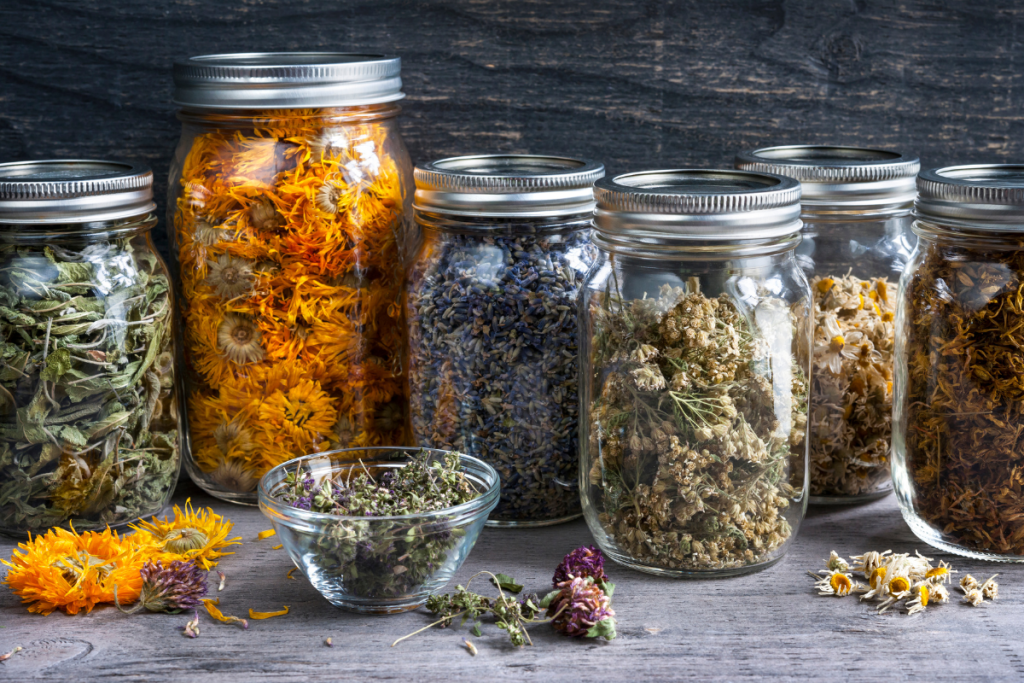
While I am a registered nurse (RN, BSN), I am not a medical doctor. Please take this education and speak with your healthcare provider before taking these herbs.
As an Amazon Associate, I earn from qualifying purchases. This post contains affiliate links, which means I make a small commission at no extra cost to you. You can view our privacy policy here.
Postpartum women
The postpartum period is after you’ve given birth. It is both physical and emotional for the mother. The Western medical community considers the postpartum period only to be the following 6-8 week period after birth. In this time frame, the woman’s body is supposed to have returned to its natural state. From personal experience, I can assure you that this is not the norm for most women. Some women can return to their pre-pregnancy state within this time frame, however, for most it is an unrealistic expectation. There is now some research showing that the postpartum period lasts up to six months.
The postpartum period will look and feel different to each woman, especially those who had a vaginal delivery vs those that had a cesarean section (abdominal surgery). There are still some similarities that will happen in the early recovery period.

Early recovery period
The early recovery period begins immediately after birth. The mother’s healthcare provider will be closely monitoring her for any adverse events such as a fever, blood pressure issues, level of lochia (bleeding/bloody discharge), size and firmness of the uterus, and functioning bladder and bowel.
The woman’s uterus will start to return to its normal size through a process called involution. During this time, the uterus should remain firm when palpated (touched). The placenta being expelled from the uterus will leave a dinner plate-sized wound that requires healing over the next several weeks. Too much movement can continue to slough off the healing of this wound and prolong the healing process or even worsen to too much blood loss. During this time, rest is very important to allow the mother time to heal and recover from birth.
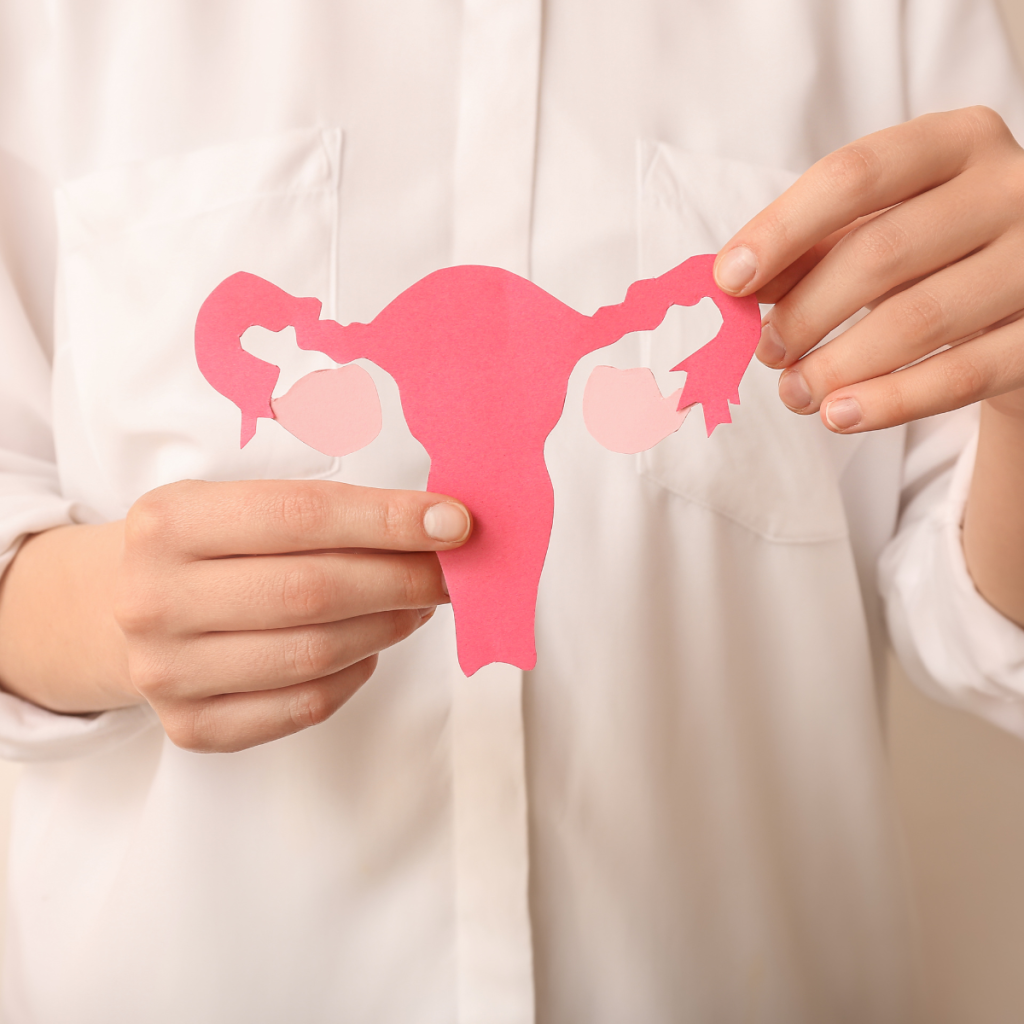
While the uterus is returning to its normal size, there will be afterpains. The more children the mother has had, the worse these pains will likely be.
Breasts will begin to secrete colostrum for the first 24-72 hours. On the second to fifth postpartum day, the mature milk will start to appear.
Some back and hip pain can be expected. If the mother received an epidural or spinal anesthesia may have a lingering backache for the first few days or weeks following the delivery of their baby.
Self-care after birth
Each woman’s postpartum experience will be different from the next. However, the one thing that every woman needs to do is to prioritize healing care for the mother so that she will adequately heal and be able to care for her newborn baby.
Postpartum healing includes aspects of:
- rest and sleep
- activity level
- perineal care (bruising, incisions, or tearing)
- bowel and bladder function
- hemorrhoids
- nutrition.
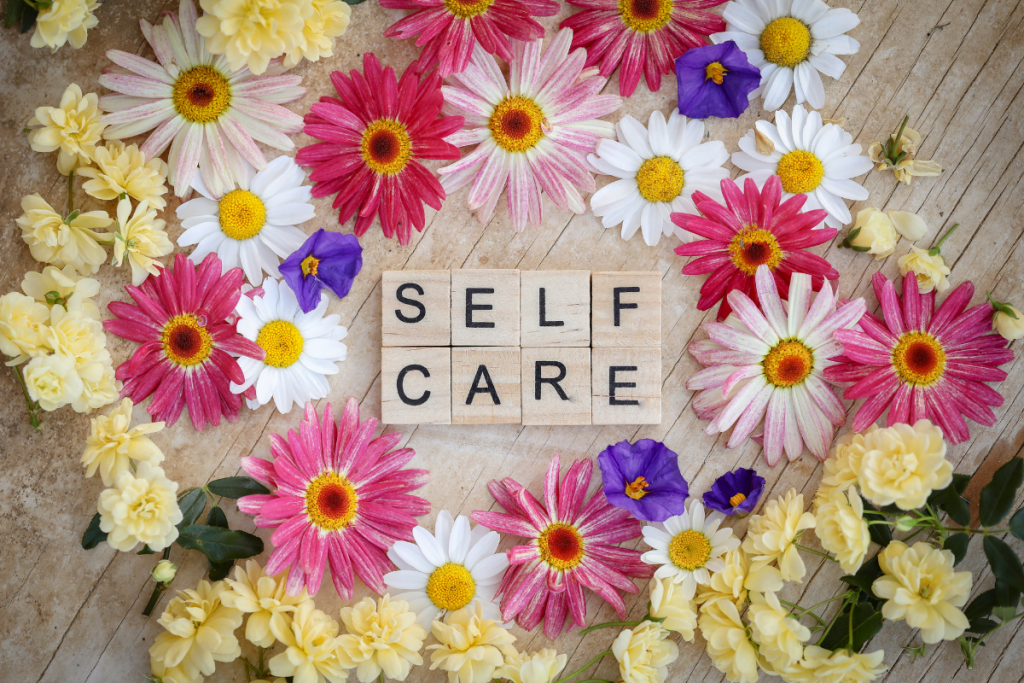
All of the above should be considered when choosing medicinal herbs to use. Below are specific items to consider for each type of delivery.
Vaginal deliveries
Specific things to consider for vaginal deliveries are:
- vaginal trauma (bruising, incisions, or tearing)
- hemorrhoids
- constipation
- lochia (bleeding)
- pain management
Cesarean sections
Specific items to consider for cesarean sections are:
- surgical incision care
- constipation
- breathing exercises to prevent pneumonia
- pain management

Breastfeeding Journey
If the mother is choosing to breastfeed, they will most likely be prioritizing the quantity of milk they are producing. Most mothers, including myself, want to find ways to increase their milk supply. There are, however, some mothers who overproduce and will need help with engorgement.

For the mothers choosing not to breastfeed, they may want to find ways to help “dry up” their milk supply quickly. Some recommend using tight ace bandage wraps around your breasts to help prevent engorgement. I have not tried this or known anyone who has, but I have heard of it several times being used successfully.
Best Herbs for Postpartum
The herbs listed below are the most effective herbs for the most common ailments during the postpartum recovery period.
Herbal medicine should always be used with caution, just as traditional medicine and prescription medications are. Discuss these herbs and recipes with your healthcare provider before use.
See my resources page for more sourcing of herbs and DIY items.
Possible postpartum ailments
These are the most common postpartum ailments, both physically and mentally.
- Abdominal pain, cramps
- Vaginal pain (bruising, sutures, and trauma)
- Constipation
- Hemorrhoids
- Back and hip pain
- Headaches
- Anemia
- Mastitis
- Postpartum depression
- Postpartum anxiety

For all of the ailments and healing that need to be addressed in the postpartum recovery period, these are the 12 best herbs to have on hand.
- Ashwagandha
- Red raspberry leaf
- Nettle
- Goats rue
- Chamomile
- Ginger
- Oatstraw
- Comfrey
- Lavender
- Holy basil
- Alfalfa
- Cramp bark
Ashwagandha
Ashwagandha (Withania somnifera) is an adaptogen, anti-inflammatory, antidepressant, and nervine herb. This herb can help with adrenals, anxiety, depression, exhaustion, insomnia, and reproductive health. Because it is an adaptogenic herb, it can help reduce the effects of stress while also promoting energy. It is used as a recovery herb from certain harsh diseases. Ashwagandha has anti-inflammatory properties that can aid in postpartum healing and would be a great addition to a postpartum tea formula.
This herb should be used cautiously, if at all, during pregnancy as it can cause a miscarriage. It is contraindicated for those who are sensitive to the nightshade plant family.
This herb can be taken as a tincture, capsule, or decoction. This is a great herb to add to any formula to promote health and wellness.
Take 4-8 oz 3 times a day as a decoction. As a tincture take 1-10ml 3 times daily. In capsule form take 2-6 capsules 3 times daily.

Red raspberry leaf
Raspberry leaf (Rubus idaeus) is a great uterine tonic that most women have already heard of and used while pregnant. It is high in tannins, vitamins C and A, calcium, phosphorus, iron, and trace minerals. It not only nourishes the blood with its minerals and vitamins, but it specifically tones the uterine muscles and helps regulate the menstruation of women. When taken with other herbs it can also assist with pain relief.
Raspberry leaf can also aid in milk production and assist in returning the uterus to its normal size.
It has also been used for constipation.
There are no known warnings to this herb.
This herb is best taken as a tea or decoction alone or in a formula. There is a recipe with this below.
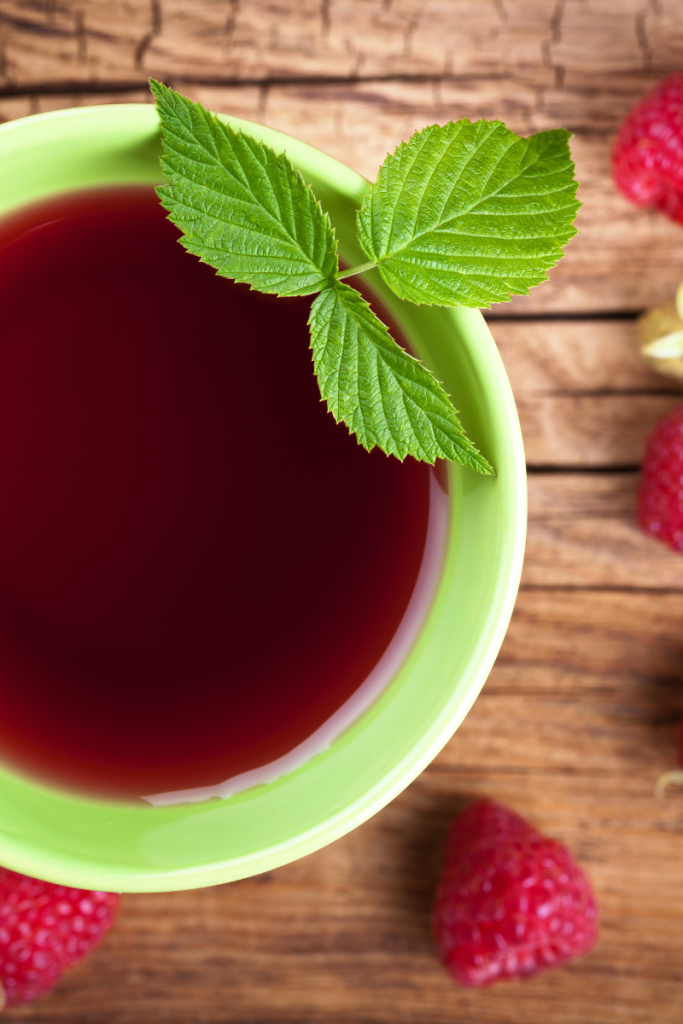
Nettle
Nettle (Urtica dioica) is a nourishing herb full of iron, calcium, magnesium, protein, and other nutrients. This is an excellent herb for anemia, low blood pressure (hypotension), and general weakness. Nettle leaf is anti-inflammatory and would work well to ease inflammation postpartum. This herb will also aid in the nutrition of the mother’s breast milk.
This herb can sometimes have a stimulating effect on some women.
Nettle is extremely safe except when trying to harvest a live plant without gloves. It is called “stinging” nettle after all.
Add nettle leaf to any tea or decoction to add its many nutritional benefits. There is a recipe with this below.
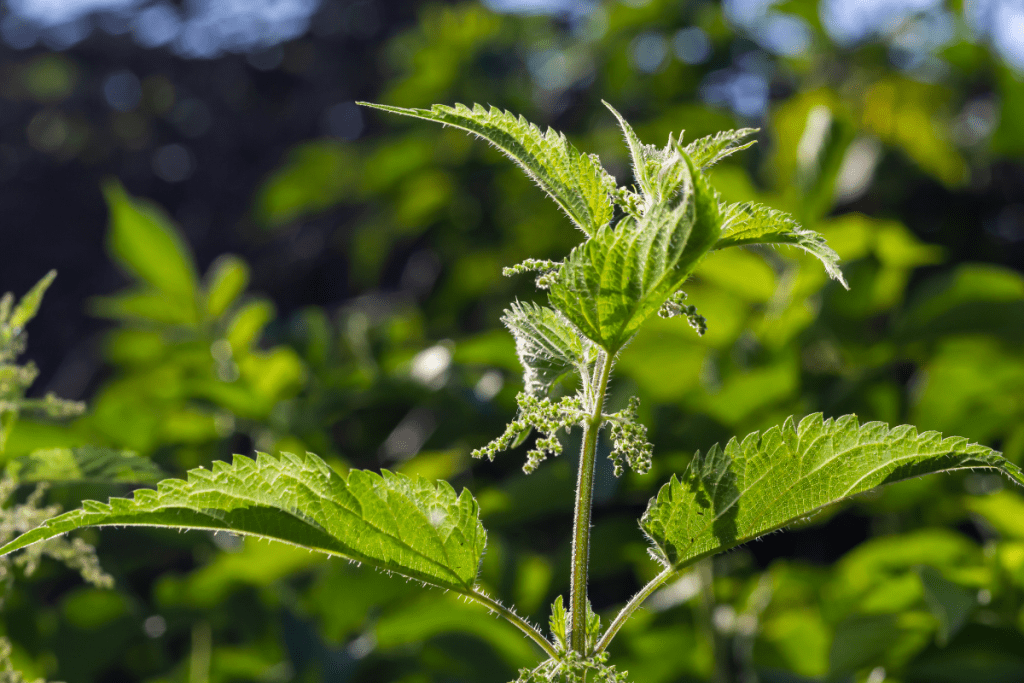
Goat’s rue
Goat’s rue (Galega officinalis) has been shown to help new mothers relax and let it all flow. It affects the blood (circulatory system) and mammary glands (breast tissue). This herb is best used to help stimulate milk production and increase the mother’s flow of milk. It has been shown to increase a mother’s milk supply by up to 50 percent.
This herb should not be taken if you are on a diuretic medication.
Goat’s rue is best taken as a capsule. You can find this on Amazon easily enough. This is the one I take postpartum: Herbamama Goat’s Rue Capsules
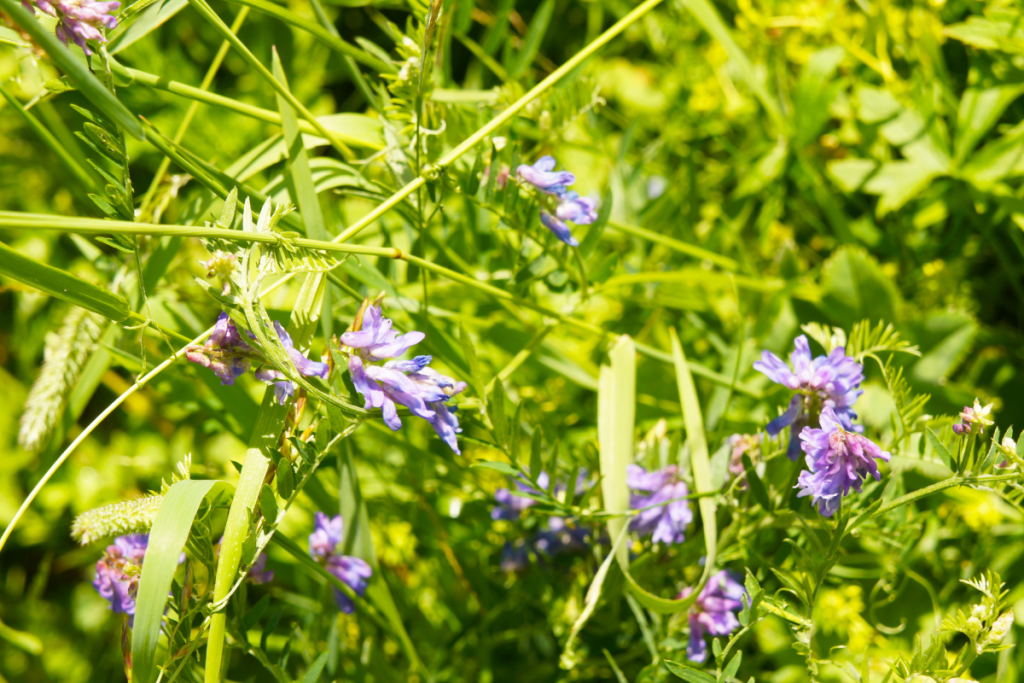
Chamomile
Chamomile (Matricaria chamomilla) is a relaxing nervine, mild sedative, antispasmodic, and anti-inflammatory herb. Most have heard of or even used this herb in their tea before bedtime. Drinking a warm cup of chamomile tea can help with relaxation, insomnia, anxiety, and pain. Chamomile being an antispasmodic herb means that it can help relax muscle tension or anxiety. This can help a postpartum mother with their uterine contractions and to find rest.
Chamomile is also anti-inflammatory and can help heal wounds sustained during childbirth.
Chamomile is considered safe to most people except for those who may be sensitive to the Asteraceae (aster) family.
This herb is best taken as a tea or cold infusion, tincture, or glycerite. As a tea or cold infusion take 2-8oz up to 3 times a day. As a tincture or glycerite take 1-5ml 1-4 times daily.
This herb is also popular as an essential oil and can be diffused or applied diluted or neat to the palms of hands and breathed in several times.
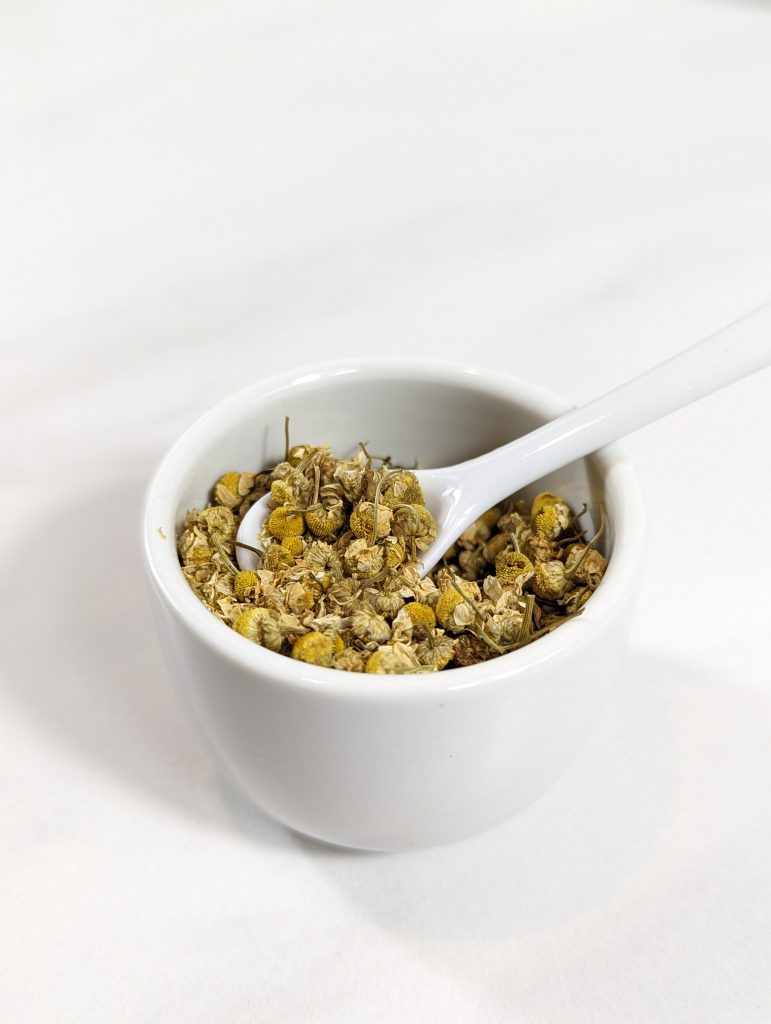
Ginger
Ginger (Zingiber officinale) is shown to increase blood circulation. Using ginger postpartum will help to circulate blood flow to the pelvis and promote healing. It has recently been shown to aid in increasing breast milk production as well. It is also a potent anti-inflammatory herb that studies have shown is as effective as ibuprofen for reducing pain and inflammation.
If you are taking blood-thinning medication you should consult with your doctor before taking large amounts of ginger regularly.
Ginger can be taken as fresh juice and used 4 oz, mixed with equal parts hot water up to 3 times a day. As a tincture take 0.8-1.5 ml in water up to 3 times a day. Capsule take 500-1000 mg as needed up to 8 times a day. Taken as a culinary food in powdered form, it can aid in digestive and general health.
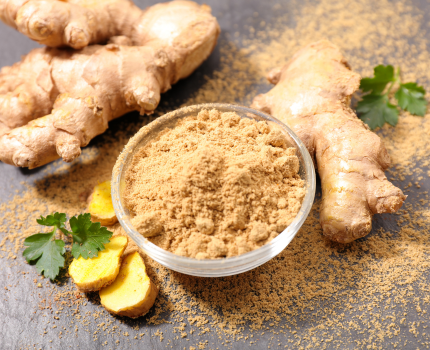
Oatstraw
Oatstraw (Avena sativa) is a nervine, stimulant, and antispasmodic herb. Its constituents consist of minerals, silicon, proteins, and vitamins B, D, and E. Oatstraw is used to strengthen tissues and nerves because of its high silicon content. This herb would aid in the healing of birth by nourishing and strengthening the connective tissue, skin, and nerve fibers.
Oatstraw will also aid in relaxing the body. It works best for those with mental and physical exhaustion who are irritable and can lack focus.
Use oatstraw cautiously if you have gluten sensitivity or allergy.
Taken as an infusion: take 1-2 teaspoons per cup, steep for approximately 10 minutes, and take 1-4 cups per day.
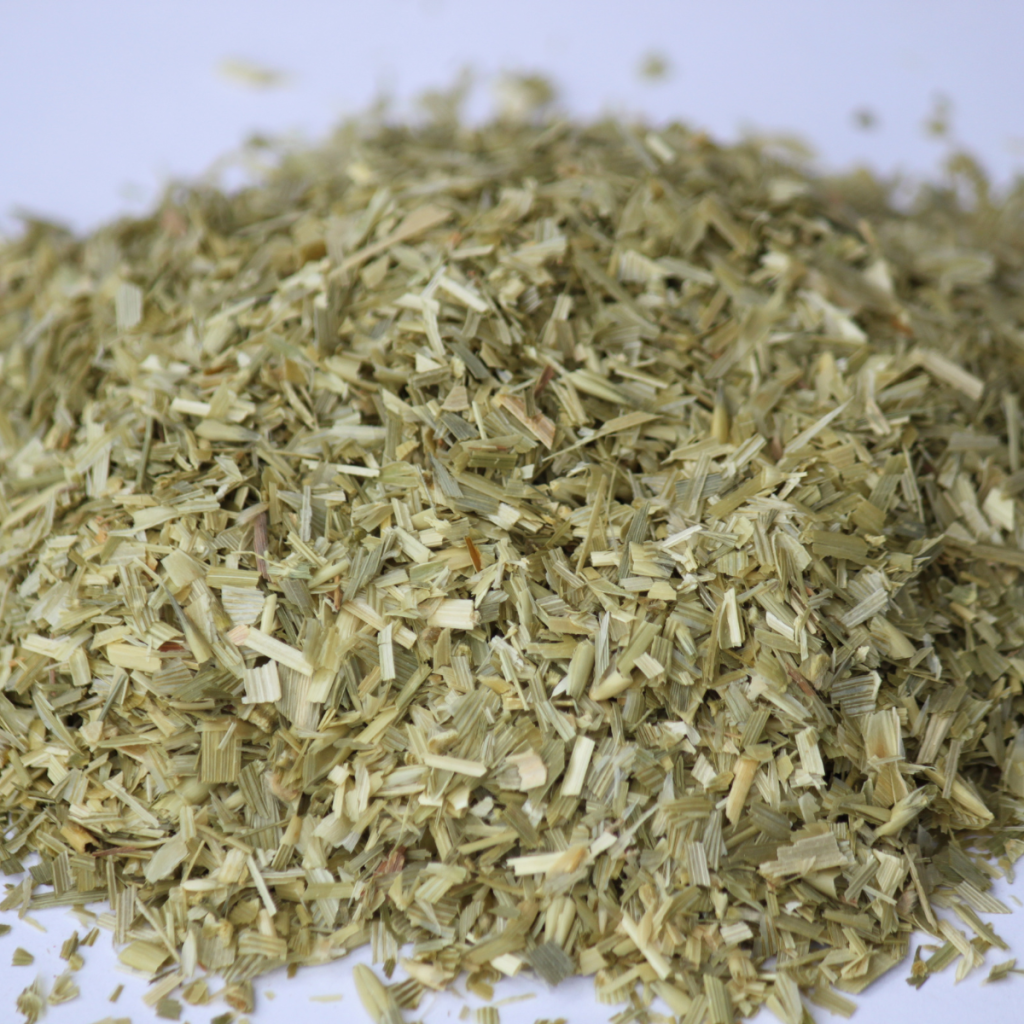
Comfrey
Comfrey (Symphytum officinale) has been used for many generations to aid in the healing of injuries. This herb contains allantoin, which is a substance that stimulates cell growth. This herb is used externally to heal wounds and other injuries, even broken bones. It is used in salves, compresses, and poultices.
Use comfrey externally to heal from either a vaginal or cesarean birth. If treating a broken bone (coccyx for example), you must make sure the bone is set properly. Comfrey will heal bones very quickly and if not set prior, may require to rebreak the bone to set properly.
Do not take comfrey internally unless you are closely monitored by your healthcare professional. Do not take internally if pregnant or breastfeeding.
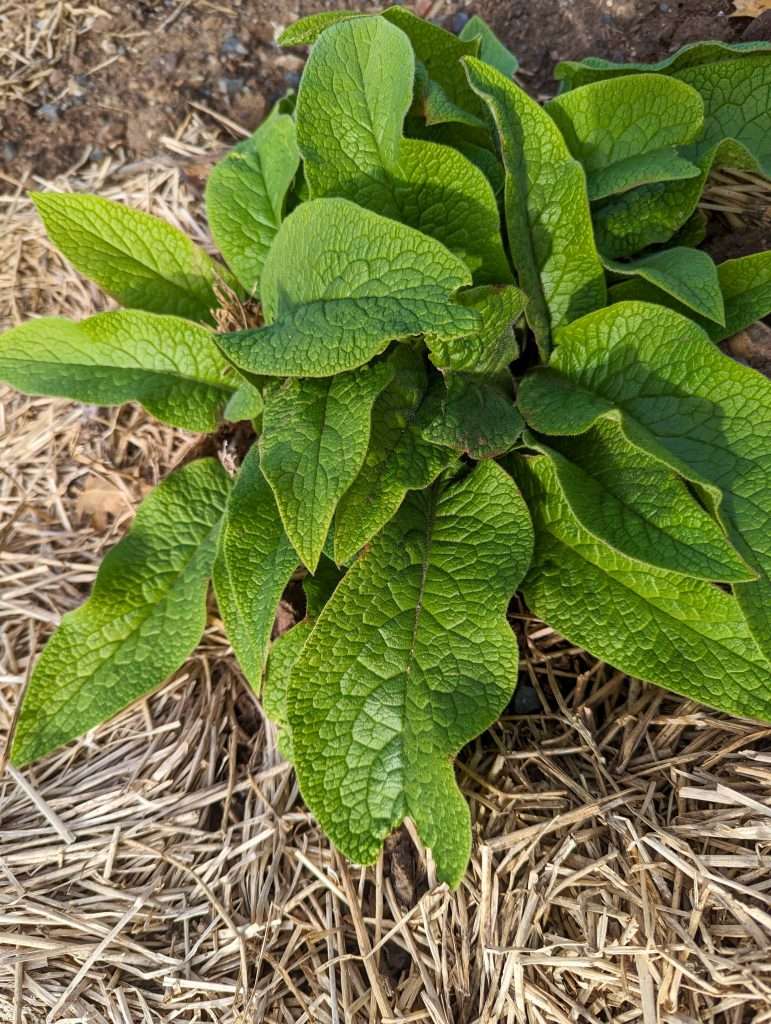
Lavender
Lavender (Lavandula officinalis, syn. L. angustifolia) is a relaxing nervine that I’m fairly certain everyone has heard of and possibly tried as an essential oil at some point. Lavender helps ease tension and anxiety very well. It is specifically for those who are high-strung, nervous, self-absorbed and need to relax. It can lift your mood and is a mild antidepressant. This herb can aid with postpartum mood disorders and postpartum anxiety.
There are no warnings or cautions with lavender.
This can be taken as a standard infusion, tincture, or essential oil. As a standard infusion take 4-8oz 1-4 times a day. As a tincture take 1-3ml up to 3 times a day. Taken as an essential oil, you can diffuse, apply neat to the palms of your hands, and breathe in several times. Can also apply it diluted to your wrists and the back of your neck. Used with Epsom salts in a bath can be a great way to relax.
I find using lavender essential oil with orange essential oil to be the best relaxing scent I have ever encountered. I can put this in a roller and keep in my purse for easy use. When I am home I can put this combination into my diffuser or use it with the Epsom salts in a bath.

Holy basil
Holy basil (Ocimum sanctum) is considered an adaptogenic herb. It can protect the heart from stress and can lower blood pressure. Holy basil can also reduce feelings of stress and anxiety. It is considered that all basils can increase joy and happiness feelings. This has been referred to as a cerebral stimulant and used with people who have a mental fog. It can be combined with other cerebral stimulants to help with cloudy thinking and poor memory. For postpartum moms dealing with stress, anxiety, and brain fog, this herb may be just what you need.
It is best taken as a standard infusion or tincture. A standard infusion take 4-8oz 3 times a day. As a tincture take 2-4ml 3 times a day.
Of course, you can also use it to cook with or make infused water. This herb is very easy to grow on your balcony or in your garden.
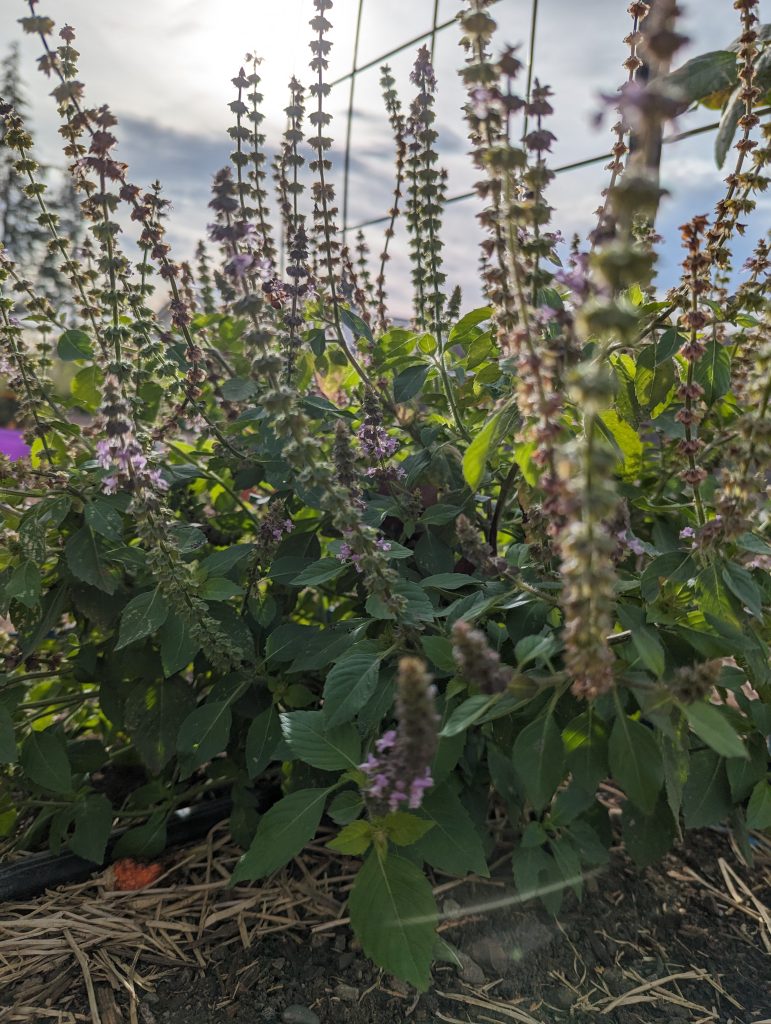
Alfalfa
Alfalfa (Medicago sativa) is a very deep-rooted herb which gives it its rich source of vitamins, minerals, trace minerals, and other nutrients. This herb can act as a mild alterative (herbs that gradually restore the proper function of the body and increase health and vitality) and blood purifier. It’s also used for general weakness and mineral deficiencies.
Alfalfa is contraindicated in those with lupus. It is also a blood thinner and should be used with caution if taking a blood thinning medication.
The fresh alfalfa herb can be added to a variety of foods and eaten daily. Taken as a decoction is 1 cup 1-2 times a day. Tincture is not recommended as solvents are not good for minerals. Can be taken as powder, capsules, and tablets of 1000-4000 mg 2-3 times daily. Glycerites can be taken of 2-10ml 3 times a day.
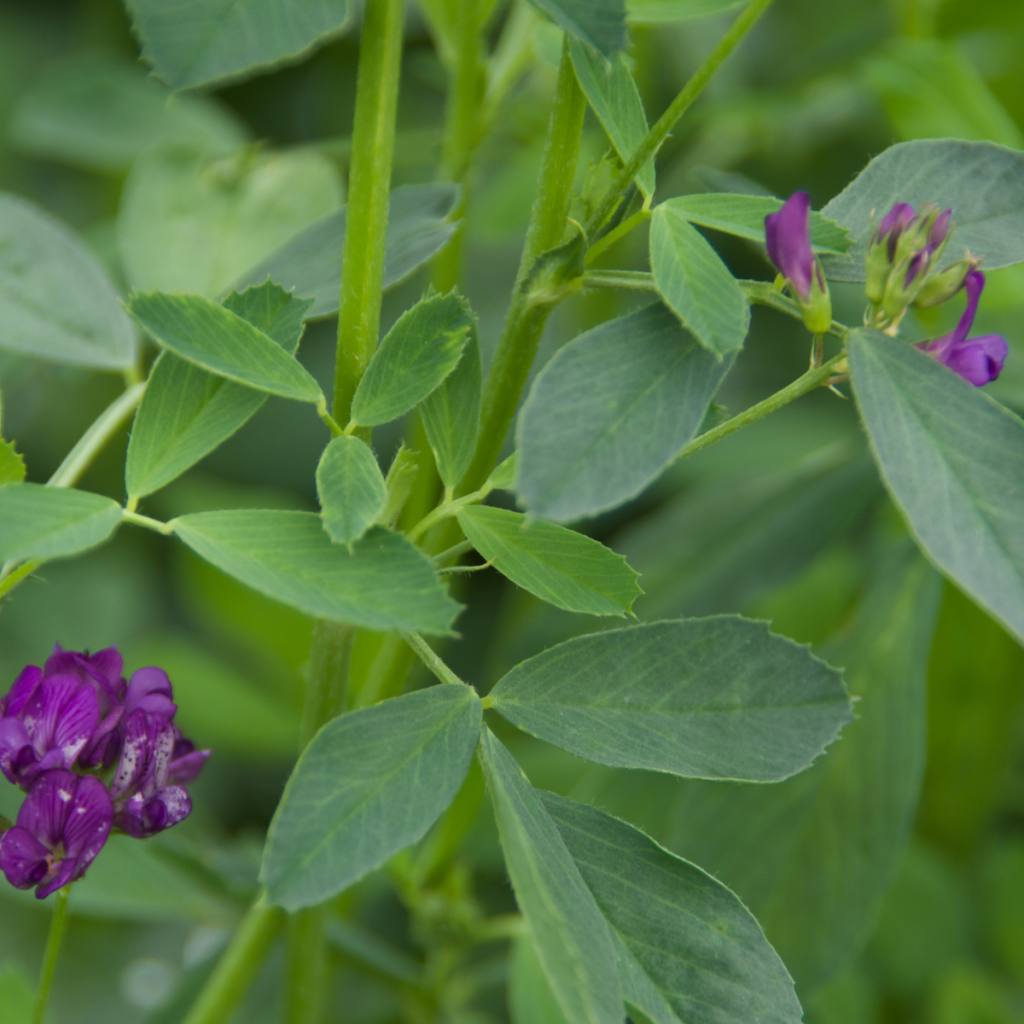
Cramp bark
Cramp bark (Viburnum opulus) is a staple in many women’s herbal remedies. This herb is used as an herbal remedy to relax muscle spasms and is commonly used as a uterine tonic as it both relaxes and tones the uterus. This is taken postpartum for pain management to help ease the cramps associated with postpartum.
Do not take with low blood pressure (hypotension). If you do take this herb alone or in a formula, watch for signs of increased bleeding or clotting. I am personally not able to take this herb as it worsens my symptoms and detaches any clots from the dinner plate-sized wound in my uterus. If this happens, stop taking it immediately and notify your healthcare provider.
Taken alone as a tincture is 1-5ml 1-4 times a day. Most often it is in a formula.
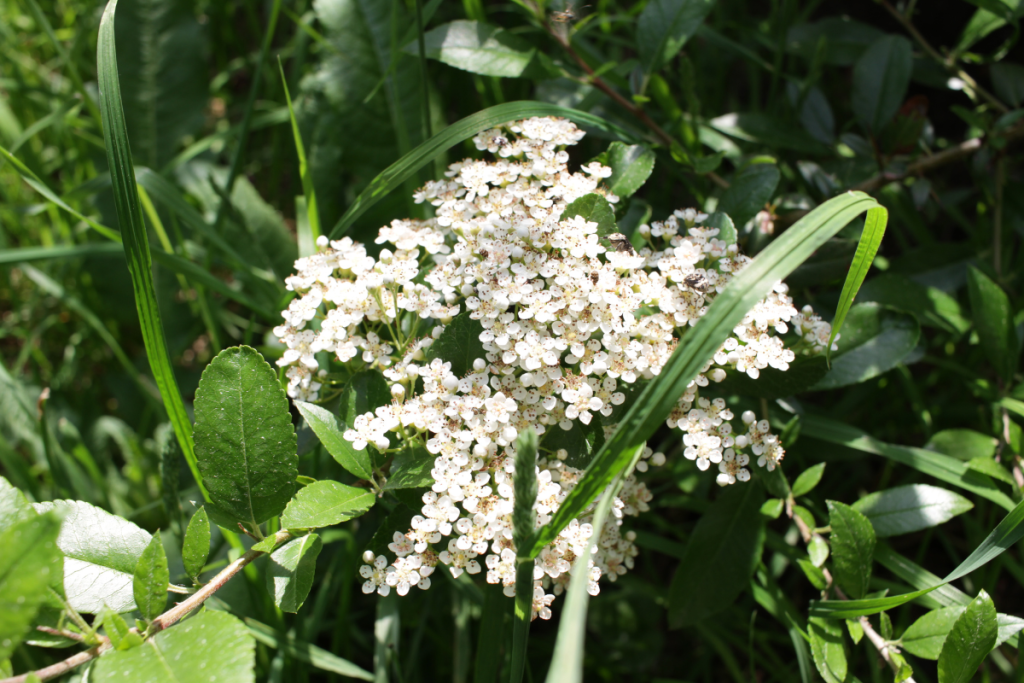
Herbal remedies
Anemia Herbal Syrup
This syrup can be taken while pregnant, postpartum, and breastfeeding to boost iron levels and help correct anemia. It is very nourishing with vitamins and minerals, especially iron.
Equipment:
- 1 stock pot
- 1 mesh strainer
Ingredients:
- 3 parts dandelion leaf
- 3 parts dandelion root
- 3 parts nettle
- 3 parts raspberry leaf
- 2 parts alfalfa leaf
- 2 parts yellow dock root
- 1 part hawthorn berry
- honey to taste
Extra ingredients:
- 1/4 cup brandy
- 1/4 cup fruit concentrate
- 2 tablespoons blackstrap molasses
- 2 teaspoons nutritional yeast
- 2 teaspoons spirulina powder
Directions:
Part 1
- Add water and the desired amount of herbs to the saucepan.
- Bring to a simmer over low heat for approximately 2 hours*. The contents should decrease by about half when completed.
- Strain herbs and compost used herbs.
- Add the desired amount of honey or another sweetener once the contents have cooled to approximately 100 degrees.
Part 2
- For every 2 cups of syrup add the extra ingredients
- Stir well, bottle, seal, and label. Store in fridge for up to several months.
- Take 4-6 tablespoons daily.
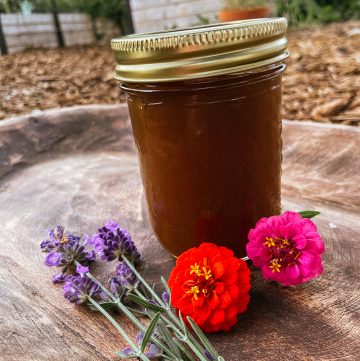
Anemia Herbal Syrup
Equipment
- 1 stock pot
- 1 mesh strainer
Ingredients
Ingredients for syrup
- 3 parts dandelion leaf
- 3 parts dandelion root
- 3 parts nettle
- 3 parts raspberry leaf
- 2 parts alfalfa leaf
- 2 parts yellow dock root
- 1 part hawthorn berry
- honey usually half fluid volume.
Extra ingredients
- 1/4 cup brandy
- 1/4 cup fruit concentrate make sure it's not juice.
- 2 tablespoons blackstrap molasses
- 2 teaspoons nutritional yeast
- 2 teaspoons spirulina powder
Instructions
Part 1
- Add water and the desired amount of herbs to the saucepan.
- Bring to a simmer over low heat for approximately 2 hours*. The contents should decrease by about half when completed.
- Strain herbs and compost used herbs.
- Add the desired amount of honey or another sweetener once the contents have cooled to approximately 100 degrees.
Part 2
- For every 2 cups of syrup add the extra ingredients
- Stir well, bottle, seal, and label. Store in fridge for up to several months.
- Take 4-6 tablespoons daily.
Notes
Tonic Tea for Women
This is a nourishing tea for women that is light and refreshing. Drink 3-4 cups daily. This tea should be made by the quart size each morning or you can make it as a single serving if desired.
Equipment:
or
- 1 small stock pot
- 1 mesh strainer
Ingredients:
- 2 parts lemon balm
- 2 parts nettle
- 2 parts peppermint or spearmint (use cautiously if breastfeeding, can dry up supply)
- 2 parts raspberry leaf
- 1 part milky oats
- Honey, stevia, or maple syrup to taste
Directions for single serve:
- Use a tea kettle to bring the desired amount of water to a boil.
- Put herbs into the chosen infuser, pour hot water over herbs, and allow to steep for at least 15 minutes. The longer the better.
- Strain the herbs and compost them.
- Add a sweetener of choice and enjoy.
Directions for making larger portions:
- Bring the desired amount of water to a simmer in the stock pot, or tea kettle if large enough.
- Pour water over the herbs and allow to steep for at least 15 minutes or more. The longer the stronger it will be.
- Strain the herbs and compost them.
- Add a sweetener of choice and enjoy.
- Store the remaining tea in a jar with a tight-fitting lid for up to 3-4 days.
Notes:
- The herb-to-water ratio recommended is 1-3 tablespoons of herbs for each cup of water or 4-8 tablespoons of herbs for each quart of water.
- Do not leave the tea out as it will go “flat” and begin to sour.
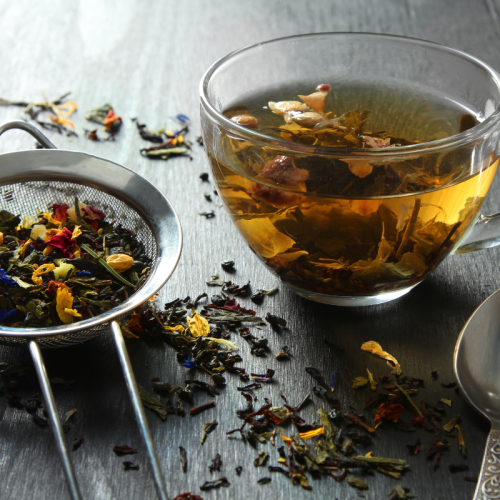
Tonic Tea for Women
Equipment
- 1 kettle
- 1 mesh strainer
Ingredients
- 2 parts lemon balm
- 2 parts nettle
- 2 parts peppermint or spearmint use cautiously if breastfeeding, can dry up supply
- 2 parts raspberry leaf
- 1 part milky oats
- Honey stevia, or maple syrup to taste
Instructions
Directions for single serve:
- Use a tea kettle to bring the desired amount of water to a boil.
- Put herbs into the chosen infuser, pour hot water over herbs, and allow to steep for at least 15 minutes. The longer the better.
- Strain the herbs and compost them.
- Add a sweetener of choice and enjoy.
Directions for making larger portions:
- Bring the desired amount of water to a simmer in the stock pot, or tea kettle if large enough.
- Pour water over the herbs and allow to steep for at least 15 minutes or more. The longer the stronger it will be.
- Strain the herbs and compost them.
- Add a sweetener of choice and enjoy.
- Store the remaining tea in a jar with a tight-fitting lid for up to 3-4 days.
Notes
- The herb-to-water ratio recommended is 1-3 tablespoons of herbs for each cup of water or 4-8 tablespoons of herbs for each quart of water.
- Do not leave the tea out as it will go “flat” and begin to sour.
Let me know!
Let me know in a comment below if you’ve tried any of these recipes, herbs, or another postpartum must have.
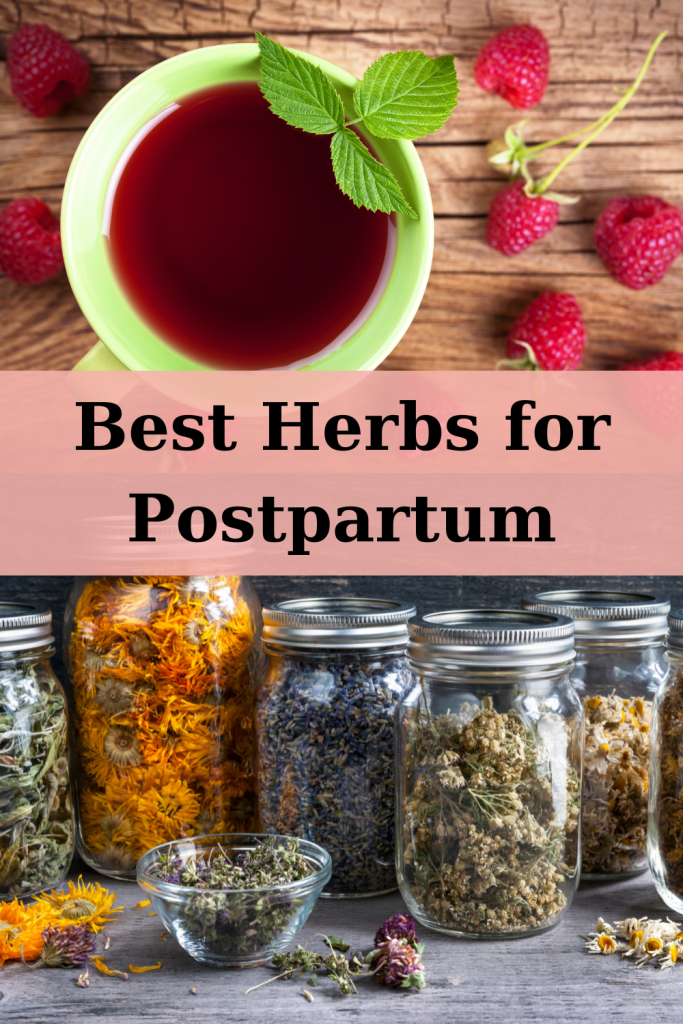
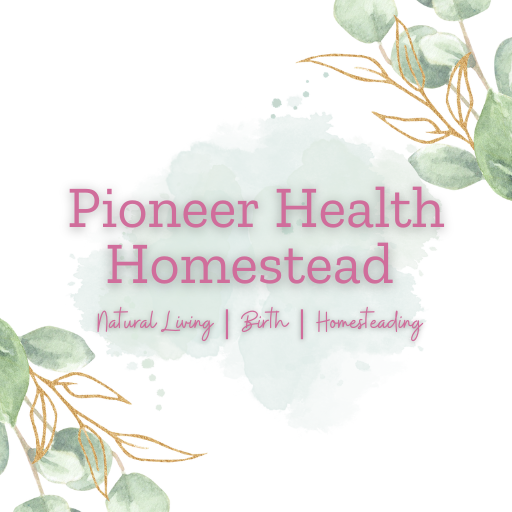
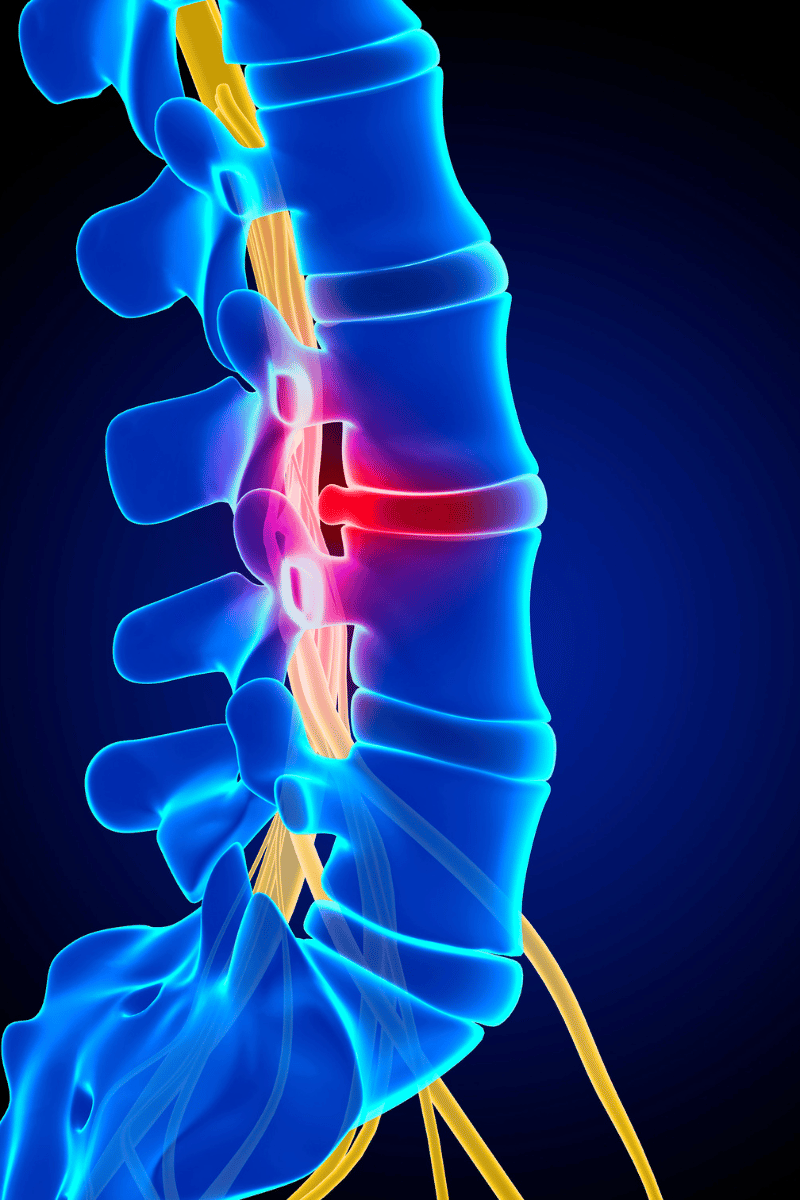

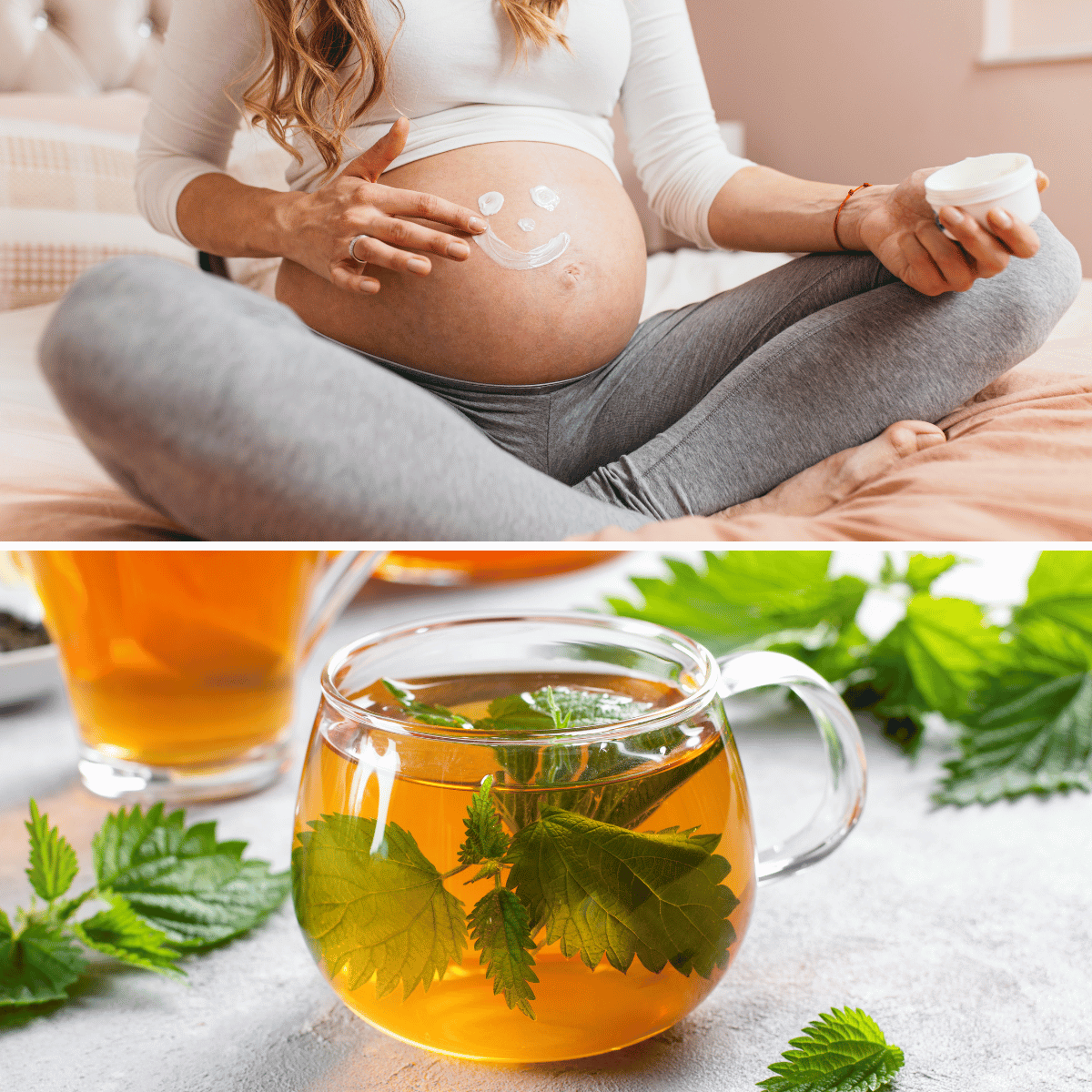
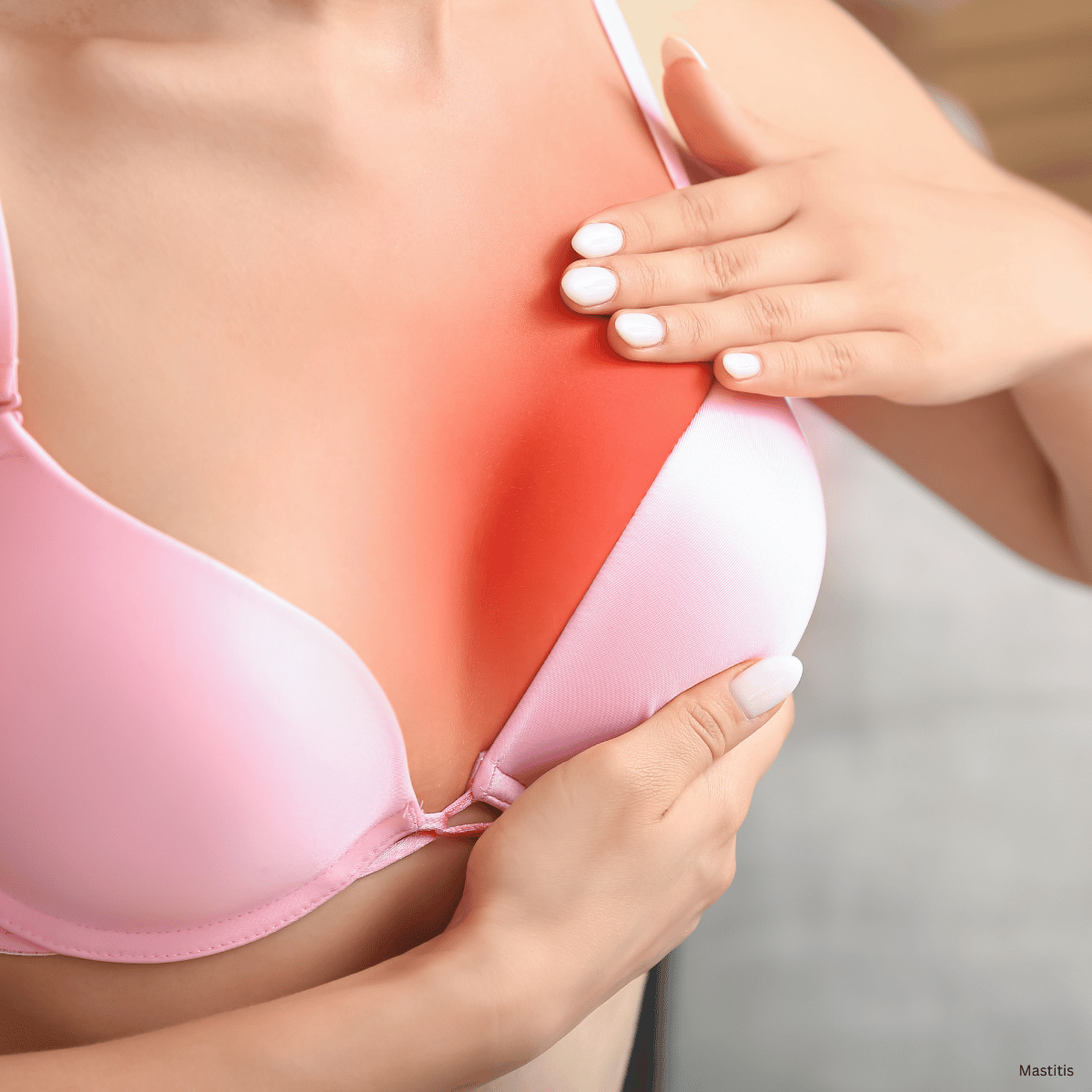
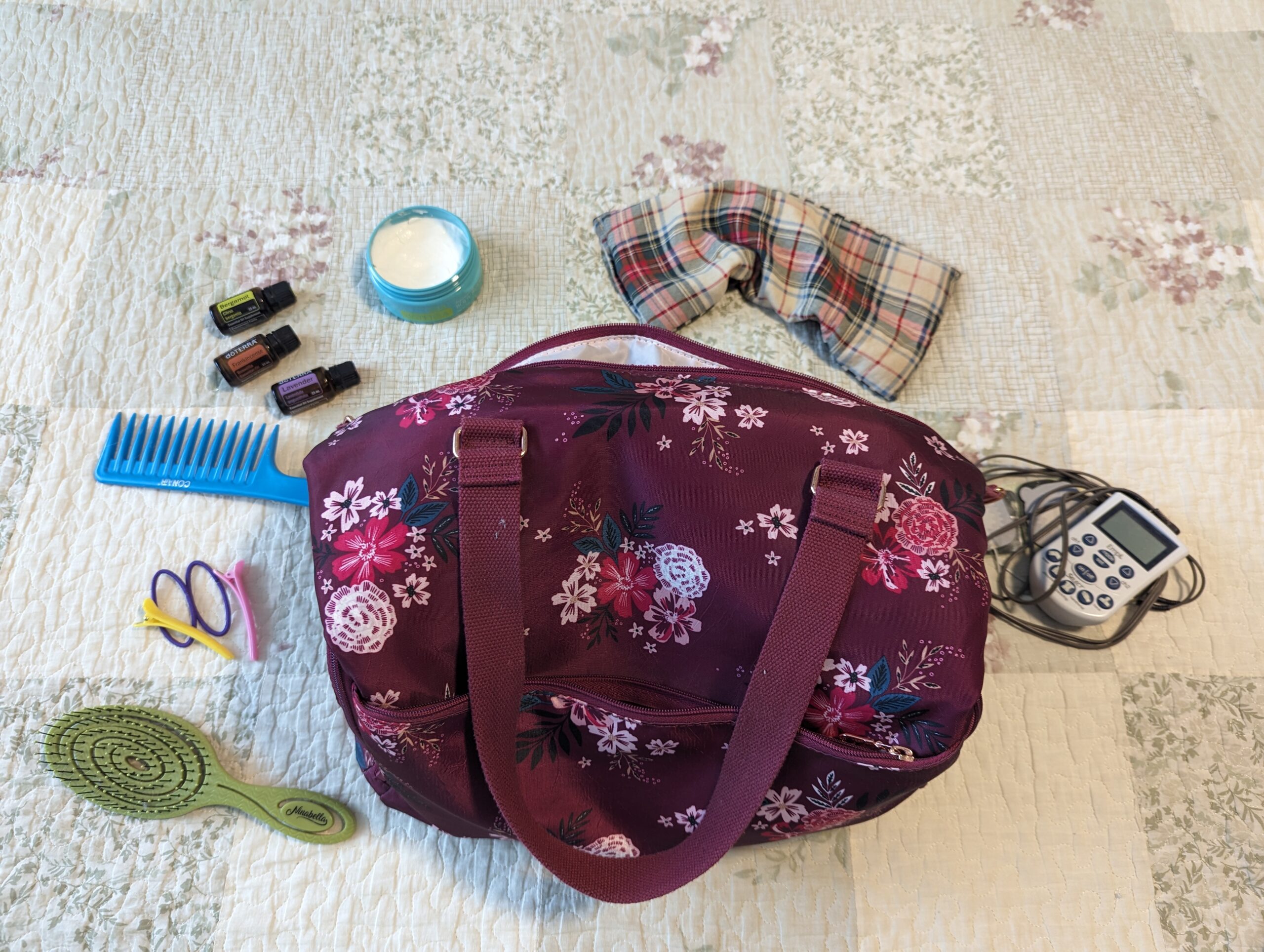
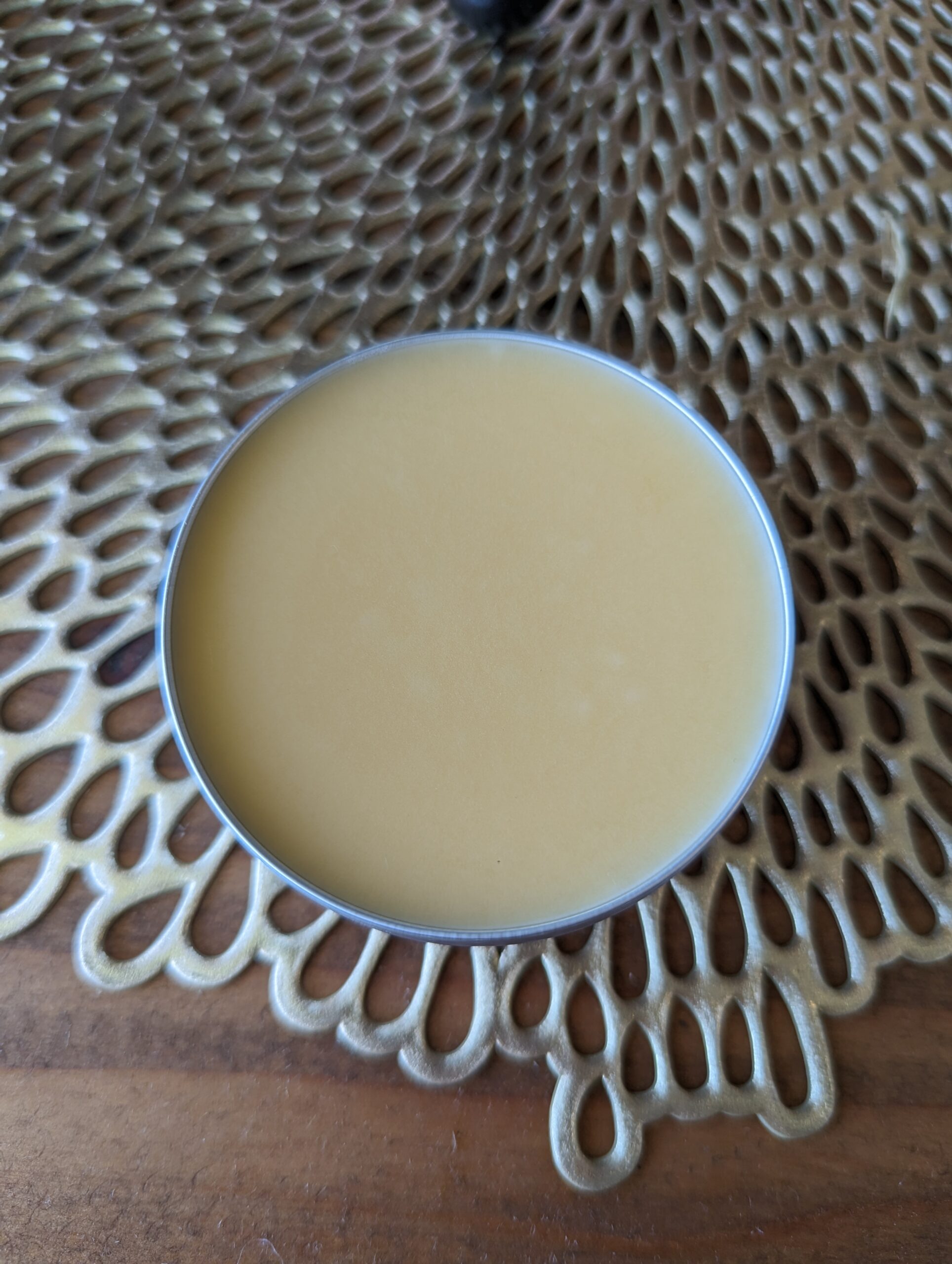
I wish I had access to that much useful information when I was post partum! Thank you!
What a wealth of knowledge! Wonderful for women to know! I am currently 15 months postpartum. Not sure if more babies are in my future, but I will remember this!